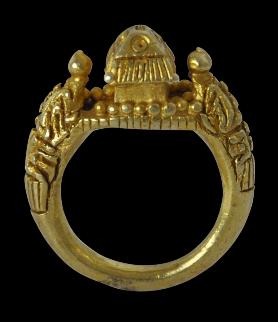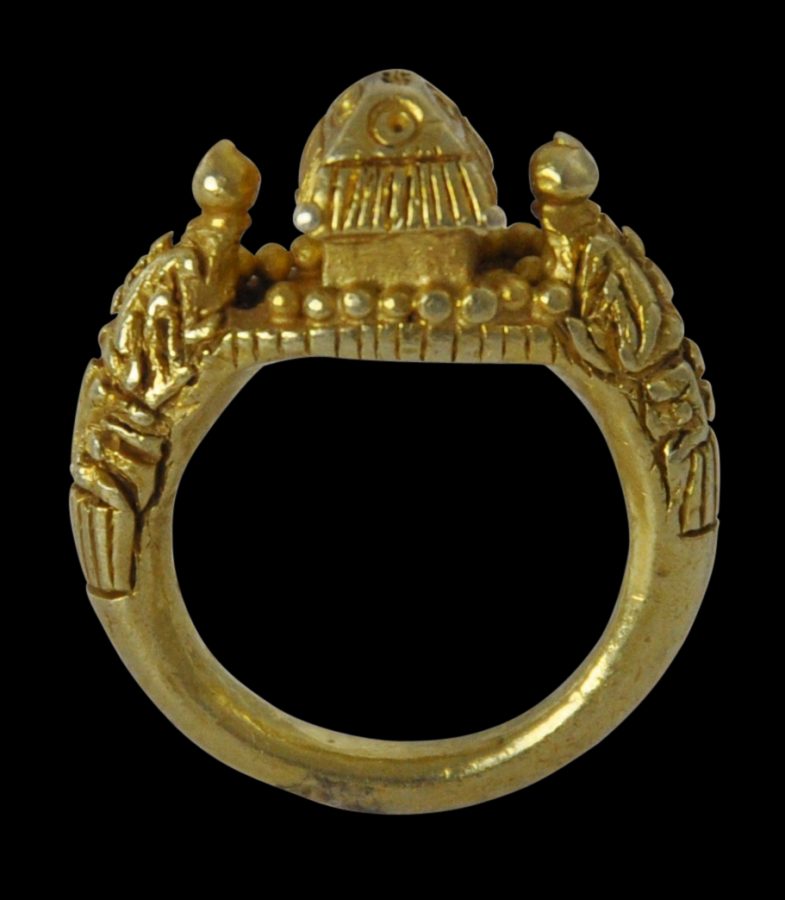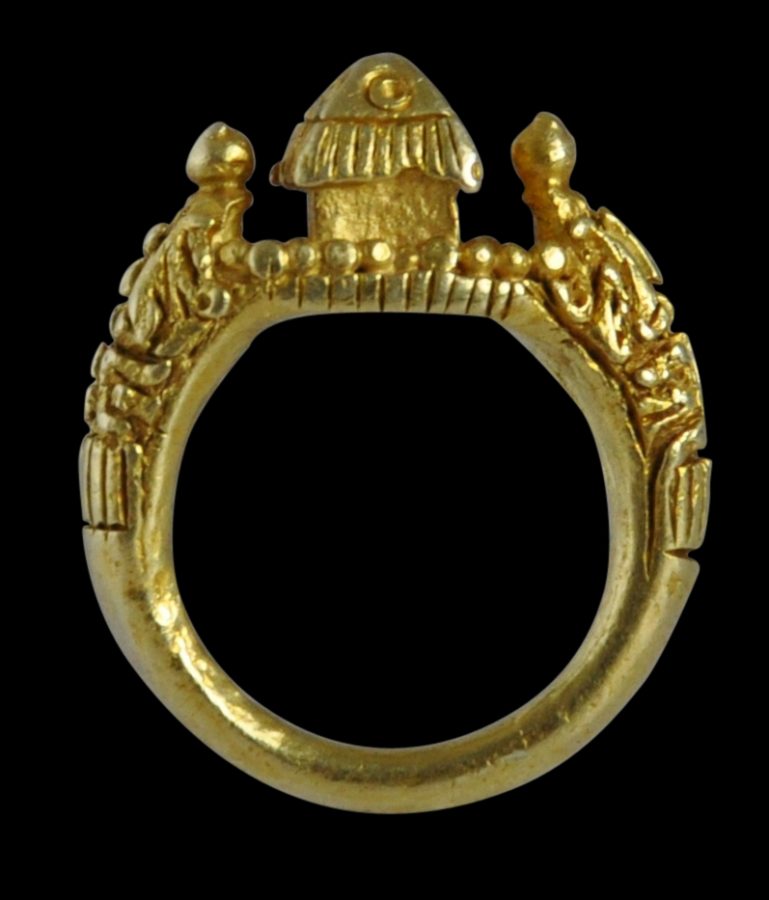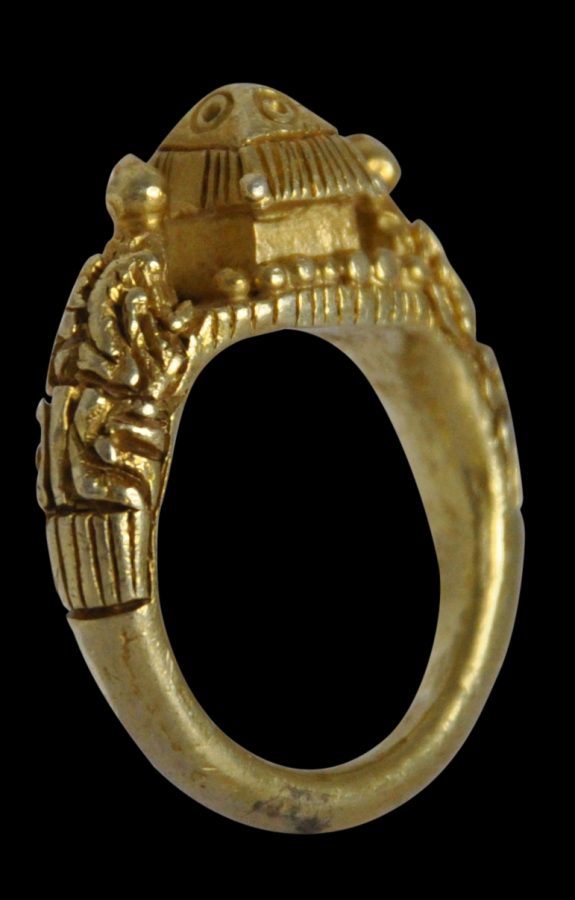This beautiful, very wearable ring has been cast from solid gold. It comprises a smooth hoop which evolves on each side into two stylised snub-nosed makara and between them is an unusual hut-like structure which possibly could also represent Mount Meru, the mythical abode of the gods in Buddhist cosmology.
The busy relief of the makaras is reminiscent of the intricate and busy scrollwork seen in stone carving associated with Banteay Srei at Siem Reap in Cambodia.
It is likely that this ring is from Cambodia, although trade, conquest and migration across Southeast Asia from AD700 to AD1500, has meant that there is a continuation of styles across the region particularly when it comes to tradeable goods such as jewellery. Indeed, the styling of the ring has some similarity to a small group in the so-called Dieng-style from central Java dating to the Early Classic Period, AD700-AD1000 (see Miksic, 1990. p. 83).
The ring is wearable, stable, and without repairs or losses.
References
van Cutsem, A., A World of Rings: Africa, Asia, America, Skira, 2000.
Ibbitson Jessup, H., Masterpieces of the National Museum of Cambodia, Friends of Khmer Culture, 2006.
Miksic, J., Old Javanese Gold, Ideation, 1990.





